Best Flushing Toilet Reviews and Buyer’s Guide of 2023
We all know that we need a good toilet. But if you’re anything like us, then you’re not exactly sure how to go about picking the best one. Here are a few things that will help you in your decision making process. Good luck and happy flushing!
Rough-In Measurements
The first step in your toilet purchasing journey is to make sure your new flushing toilet will fit in your bathroom. The most important measurement for this is the rough-in, which is the distance between the wall behind the toilet and the center of the drainpipe or the bolts that mount the toilet to the floor. It is easiest to get this measurement before taking out your old toilet.
If measuring the rough-in based on the bolts that hold the toilet down, then measure from the wall behind the toilet to the center of the closest bolt.
If there are four bolts present, then measure to the center of the rear bolts (closest to the wall).
Just make sure that your new toilet’s rough-in is smaller than your old toilet’s rough-in. The standard rough-in is 12 inches, but you may encounter 10 inch or 14 inch ones in some older homes. The rough-in measurement will be available in the product information of your prospective toilet. You can also find the rough-in measurement on the Comparison Table above.
Toilet Style
Toilets are made in one of two styles: one-piece or two-piece.
Our article includes a both those types. The most commonly used toilet is the two-piece, which means that the bowl and the tank are separate pieces bolted together. Two-piece toilets tend to be less expensive and may be slightly easier to find repair parts for if necessary.
Both styles of toilet function about the same, but some prefer the one-piece option for a couple of reasons. First, there is no seam between the bowl and tank, so it looks sleeker. Second, one-pieces have less areas to trap bacteria and tend to be easier to clean.
A third option, which is becoming increasingly popular in more contemporarily designed homes, is the wall-mounted or wall-hung toilet. We included one wall hung toilet review in this post (Toto MS970CEMFG#01 1.28-GPF/0.9-GPF Washlet with Integrated Toilet G500). If you are interested in this style, then look into the specifications required for wall-mounted toilets such as plumbing and waste modifications as well as additional bracing on the wall.
Toilet Bowls
Bowl Shape
You will find toilet bowls available in either a round or elongated (oval) shape. Round bowls tend cost less and are great space savers.
Elongated bowls are generally chosen for there increased comfort since they are generally about two inches longer than round bowls. Many of the toilets on our list have elongated bowls, but there are a few space saving round bowl options too. Be sure to check the comparison chart at the beginning of this article for this information.
Bowl Height
There are two general heights that most toilets fall into: standard height and universal height (sometimes referred to as “comfort height” or “right height”). For standard sized toilets, the rim is 14 to 15 inches off the ground. Universal height toilets are slightly taller with a rim around 15 to 17 inches off the ground. These taller toilets tend are usually easier for most people to use and are much easier on achy joints. The taller toilets are also ADA-approved.
Toilet Seats
Toilets are purchased in separate pieces and don’t usually include the seat.
You will want to choose a seat that complements the color and style of both the toilet and your bathroom. If your toilet has a round bowl, then make sure to purchase a round seat. An elongated bowl needs an elongated seat.
You will be able to find seats in a variety of materials including real wood, molded wood composition, cushioned vinyl, plastic, or polypropylene. We have placed a link to each toilet’s corresponding seat (same shape, brand, and color options).
You will sometimes find specialty seats available for separate purchase or even included. One of our favorites is the much quieter and more durable slow-close toilet seat.
The fanciest toilet seats have incredible amenities like surface heaters, a warm water stream, warm air drying, and air deodorizing functions. The one wall-mounted toilet (referenced above) on our list boast all those top end features.
Tanks and Flushing Systems
Tanks
This is not something you should be overly concerned with when choosing a toilet since most toilets have comparable tank capacity. However, different tanks have different flush valve sizes.
The flush valve is located in the center of the tank and releases the water held in the tank when you flush your toilet. A larger valve means a higher rate of water flow into the bowl; a higher water flow rate usually results in a more powerful flush. This is essential with the water efficient toilets we have included on our list.
You should also consider where the flush lever is located (either on the left side of the toilet, the top of the tank, and even sometimes on the front of the tank) and decide what is most aesthetic and practical.
Flushing Systems
The two most common flushing systems are the pressure-assisted and the gravity-flush systems. The pressure-assisted system pushes water into the bowl whenever the toilet is flushed. This type of system reduces the likelihood of clogging, but tends to be noisier and more expensive. It can also be quite costly if maintenance is ever needed.
The gravity-flush system is more common and the simplest type of flushing system. Water creates flushing pressure in the tank, goes into the bowl, and is pushed through an S-shaped trapway* (the tubing on the sides of your toilet through which water flows). The flush is completed with a water siphoning action. Most prefer this type of flushing system because it is quieter and requires less maintenance than a pressure-assisted system.
*Note that a larger trapway diameter will help reduce the chance of clogging and overflowing. Another feature of many of the trapways on our list is a fully glazed surface that aids in moving waste through without clogging.
Some newer toilets, including a couple on our top ten list, have dual flush options. This allows the user to decide between a full or partial flush. This allows the user to conserve water without sacrificing performance.
Finally, there are self-contained toilets that do not require a tank of water to flush. These are useful when water isn’t easily accessible or for half-bathrooms away from a water line. We include one of these self-contained toilets in our review: Saniflo 023 SANICOMPACT 48 One piece Toilet with Macerator Built Into the Base.
Water Usage
By federal law, new toilets cannot use more than 1.6 gallons of water per flush (GPF). Many high-efficiency toilets, including most of the toilets reviewed in our top ten toilets article, use much less than that. There is a good chance that your current toilet uses more (and maybe much more) water since that law came into effect in 1992. Older toilets use an average of 3.5 GPF and some go up to 7 GPF. For this reason, a high efficiency toilets will often save you money on your water bill and help save the environment.
Be sure to check out the water consumption column to see the specs of all the toilets on our list. Within the more detailed reviews, you’ll see that many of our picks have been WaterSense certified by the Environmental Protection Agency (EPA). This means that they meet strict flushing performance guidelines and use at least 20% less water than the standard 1.6-gallon toilets.
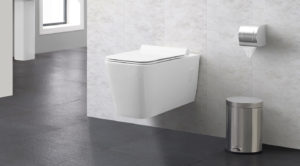 Last Updated: We can all agree that although it’s not the most glamorous appliance in our house, but it’s definitely one of the most important.
Last Updated: We can all agree that although it’s not the most glamorous appliance in our house, but it’s definitely one of the most important.










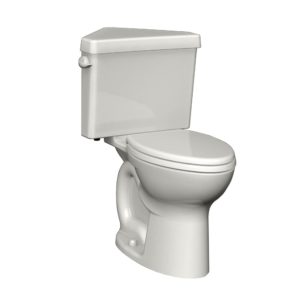
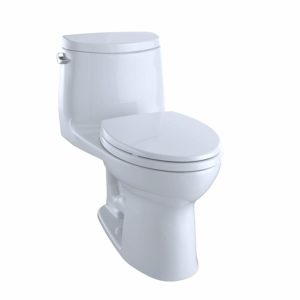
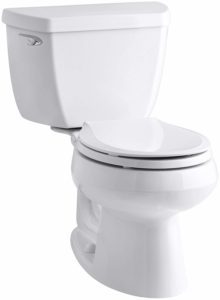
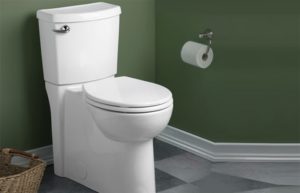

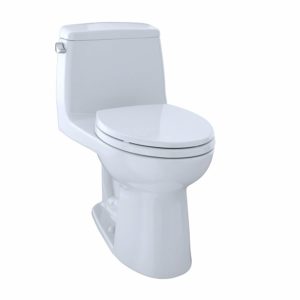
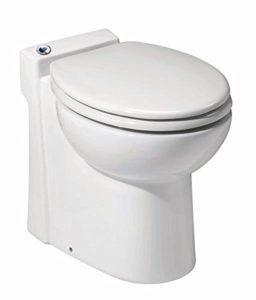

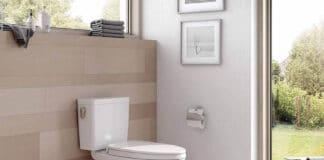



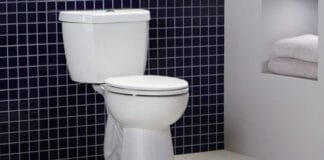

Thanks for making reviews on the best toilets. In fact, I am looking for high-efficiency toilets for sale online for my bathroom remodeling project, and it’s nice to look into some of the features I must find. Since you mentioned that round bowls are cost-effective and does not take up much space, I shall then choose this type.